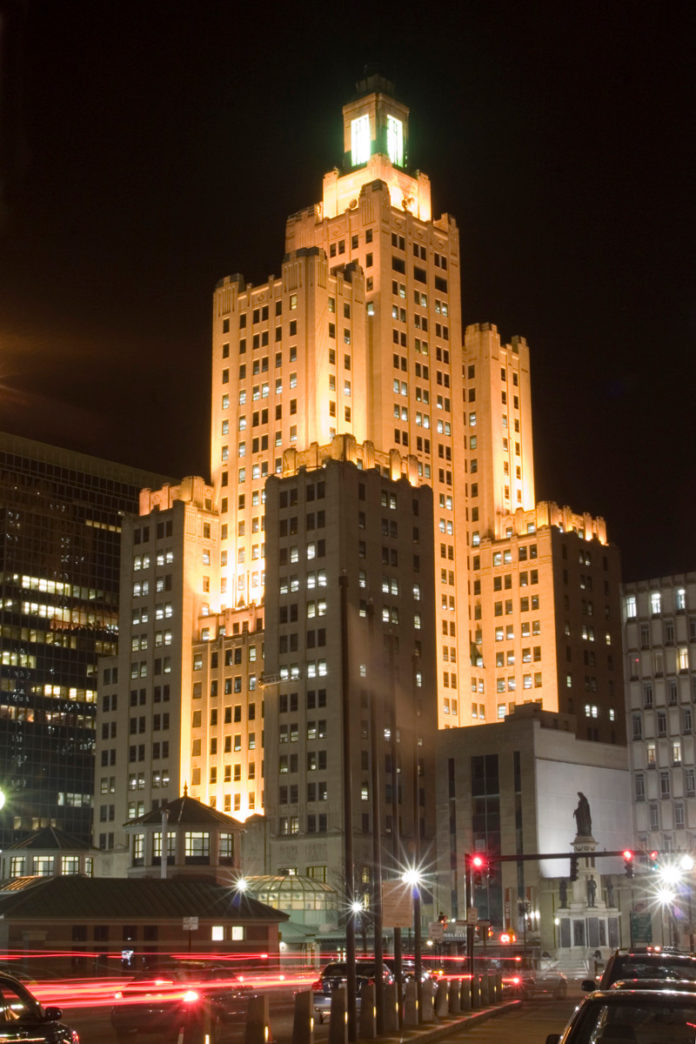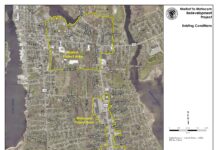
Providence commercial-property values have climbed by more than 7 percent, according to the private re-evaluation company hired to assess the capital city’s current worth.
The new values include some significant increases. Providence Place mall is now valued at $698.1 million, an increase of $52.2 million, for example.
The Manchester Street Power Station, at 4 Allens Ave., also increased in value, to $274.4 million, up from $271.9 million three years ago, according to the online records.
The new values have angered at least one prominent property owner in Providence, former Mayor Joseph R. Paolino Jr., the managing partner of Paolino Properties.
Paolino, who owns more than 20 properties downtown, said most increased in value, and some significantly. The city appears to be artificially inflating values, he said, and he plans to file a lawsuit.
If the city doesn’t lower the commercial rate, he said, it will in effect be imposing a tax increase.
“Every time there’s been an assessment, a re-evaluation, the rate always drops,” Paolino said. “But it’s also been a sneaky way for the mayor to hide a tax increase.”
The new values, already loaded onto the Vision Government Solutions website for Providence, are a reflection of comparable sales of commercial properties, as well as income reported by businesses, according to Steve Ferreira, a project manager for the re-evaluation firm.
More than 5,000 properties were affected in the comprehensive re-evaluation, he told the Providence City Council’s finance committee recently. Unless contested successfully, the new values will form the basis for the taxes paid by property owners.
Whether the increased values will inspire city officials to lower the 2016 commercial tax rate is questionable. The rate, which has remained constant for the past four years, is $36.75 for each $1,000 of assessed property value, and often is criticized by developers and business owners for being too high, or as uncompetitive with other cities.
City officials such as Council President Luis A. Aponte say they need to consider other factors, including the residential property rate, and whether a reduction in the commercial rate would push more burden onto homeowners.
If the city is going to reduce tax rates, Aponte said, he’d be more inclined to look at the motor vehicle excise tax, which in Providence is highest in Rhode Island. “It’s much more impactful,” he said.
In addition, although the property values are up, the city has a constrained budget. The administration is trying to identify new revenue sources to plug what is expected to be a significant structural deficit. Mayor Jorge O. Elorza has said the city’s comprehensive property re-evaluation could represent one source of new revenue, heading forward. His budget proposal is expected to be released in late April.
According to Ferreira, changes in individual commercial properties varied widely in Providence, from 3.5 percent to 15 percent. A broad range of commercial properties were examined, including industrial sites, Class A office towers, strip retail centers, mixed-use buildings and warehouses.
The values were posted publicly, after the company’s officials conferred with the city tax assessor. “We’re moving in the right direction,” Quinn told the council’s Finance Committee. “Property values are moving up.”
Notification letters to residential and commercial property owners, detailing the new values, were mailed the week of April 8. For the next several weeks, Vision Government Solutions will hold informal meetings with property owners who are contesting their values. A formal hearing process will follow, through the city’s Board of Tax Assessment Review, according to Aponte.
Paolino has argued the vacant Superman Building, at 111 Westminster St., next to his company’s headquarters, is depressing economic activity downtown. And he said the increasing number of vagrants and panhandlers has dissuaded tenants from choosing downtown sites.
But his premier property, the 20-story, Class A office building at 100 Westminster St., rose 12 percent in the latest revaluation, from $53.25 million to $59.59 million.
The change makes no sense, he said. “What are they basing it on? All the pigeons on the Superman building?”
Neither Ferreira nor Quinn could not be immediately reached for comment on the individual property values.
Another property owned by Paolino, a five-story building at 59 Westminster St., rose by 23 percent, from $2.8 million to $3.5 million, according to the online records.
The appeal process established by the city is designed to keep the values in place, he said.
“You have to go to court and you have to have the fortitude to fight City Hall,” he said.
Not all see the value increases as bad news.
The values are based on either comparable sales or on income and expense reporting of businesses, according to Sam Zurier, a City Council representative for East Side neighborhoods.
If the values have increased, it indicates business revenue has climbed, he said.
As for the commercial rate, the city agreed to hold it steady in 2013, a time when property values in Providence fell, at the request of business leaders. But that decision in effect transferred some $6 million in levy to the residential base, he said.
“There may be reason for [commercial] rates to go down, but it has to be put into the mix with all of these other priorities,” Zurier said. •












